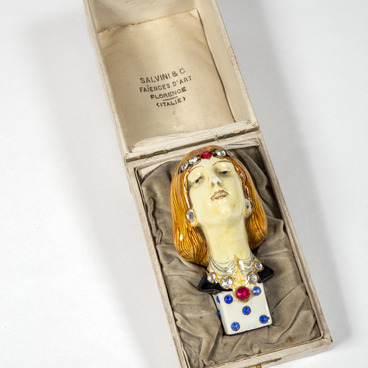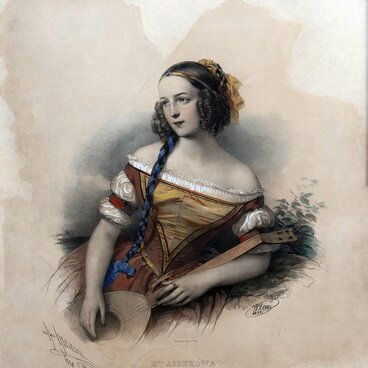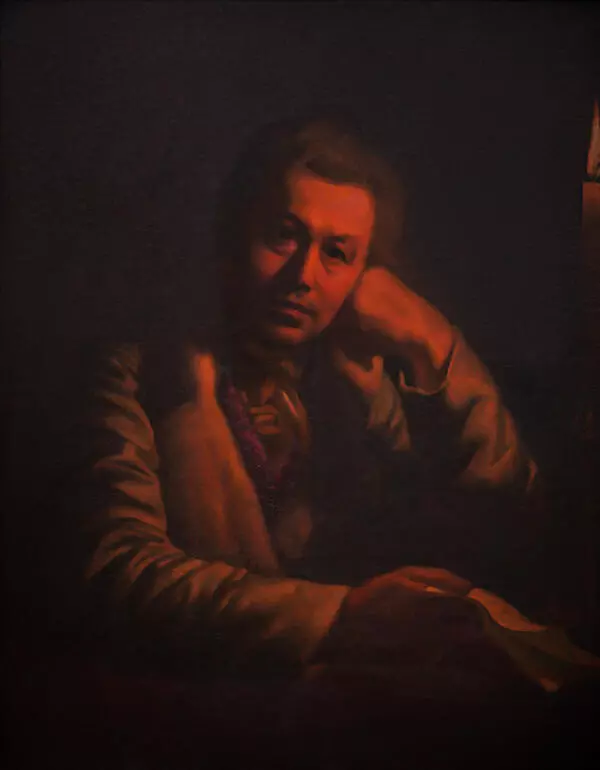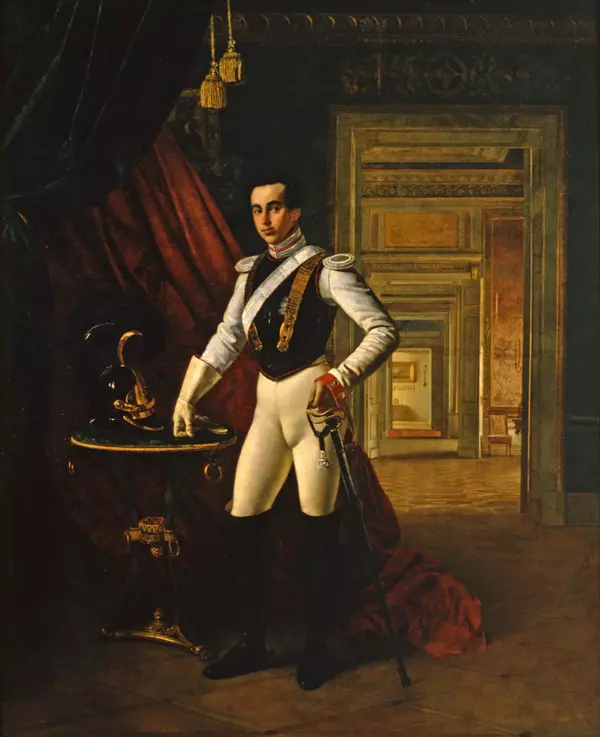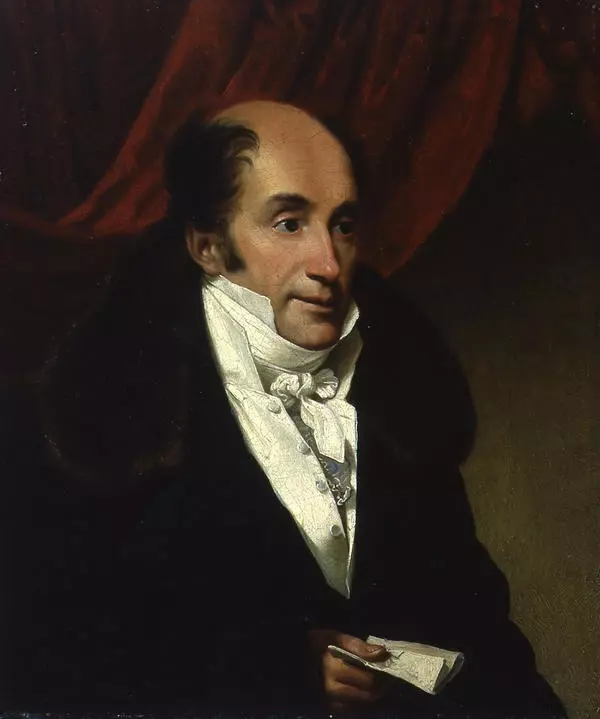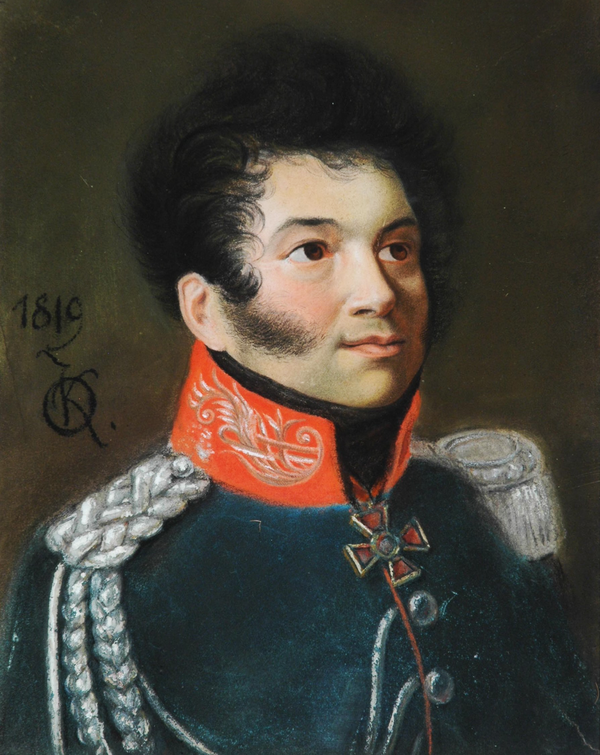The famous drama actress Ekaterina Semyonova was born in 1786. She studied at the Saint Petersburg Theater School. In 1803, Semyonova made her debut as a professional actress, and two years later she was invited to join the troupe of the Alexandrinsky Theater. Ivan Afanasyevich Dmitrevsky, a talented performer and teacher, had a great influence on her acting style. Semyonova would later continue learning roles under the guidance of Prince Alexander Shakhovskoy, who worked in the Saint Petersburg Directorate of the Imperial Theaters. The actress often consulted the poet Nikolai Gnedich, the translator of the “Iliad.”
According to her contemporaries, Ekaterina Semyonova was beautiful, she had regular features and a classical profile. Her low voice was deep and expressive, and her sincere and passionate way of acting made a lasting impression on the audience.
Semyonova showed her talent to the fullest in the dramas by Jean-Baptiste Racine, Friedrich Schiller, and Voltaire. Alexander Pushkin wrote, “When you think of Russian tragedy, you inevitably think of Semyonova and perhaps her only.” According to the poet, Semyonova “perfected the imperfect creations of poor Ozerov” and “enlivened the slow-paced lines of Lobanov.”
The audience was given the opportunity to compare Semyonova to Marguerite Georges: during her Russian tour, she and Semyonova played the same roles. Mademoiselle Georges admitted that, despite all her acting skills, she often lacked the passion that Ekaterina had in all her performances.
Alexander Pushkin wrote the following about the audience’s favorite, “No one can compare to Semyonova in the end; all words of admiration and tributes addressed to the novelty went quiet; she remained the one and only queen of the stage.” The poet admired Semyonova’s skills as a tragic actress and would even present Semyonova with the first copy of his tragedy “Boris Godunov.”
The museum houses an engraving by Nikolai Utkin that was made from a portrait by Orest Kiprensky. The artist depicted Ekaterina Semyonova in a diadem, a light white dress, and a dark cape fastened with a buckle on her left shoulder. The image also features a quatrain dedicated to the actress:
According to her contemporaries, Ekaterina Semyonova was beautiful, she had regular features and a classical profile. Her low voice was deep and expressive, and her sincere and passionate way of acting made a lasting impression on the audience.
Semyonova showed her talent to the fullest in the dramas by Jean-Baptiste Racine, Friedrich Schiller, and Voltaire. Alexander Pushkin wrote, “When you think of Russian tragedy, you inevitably think of Semyonova and perhaps her only.” According to the poet, Semyonova “perfected the imperfect creations of poor Ozerov” and “enlivened the slow-paced lines of Lobanov.”
The audience was given the opportunity to compare Semyonova to Marguerite Georges: during her Russian tour, she and Semyonova played the same roles. Mademoiselle Georges admitted that, despite all her acting skills, she often lacked the passion that Ekaterina had in all her performances.
Alexander Pushkin wrote the following about the audience’s favorite, “No one can compare to Semyonova in the end; all words of admiration and tributes addressed to the novelty went quiet; she remained the one and only queen of the stage.” The poet admired Semyonova’s skills as a tragic actress and would even present Semyonova with the first copy of his tragedy “Boris Godunov.”
The museum houses an engraving by Nikolai Utkin that was made from a portrait by Orest Kiprensky. The artist depicted Ekaterina Semyonova in a diadem, a light white dress, and a dark cape fastened with a buckle on her left shoulder. The image also features a quatrain dedicated to the actress:


